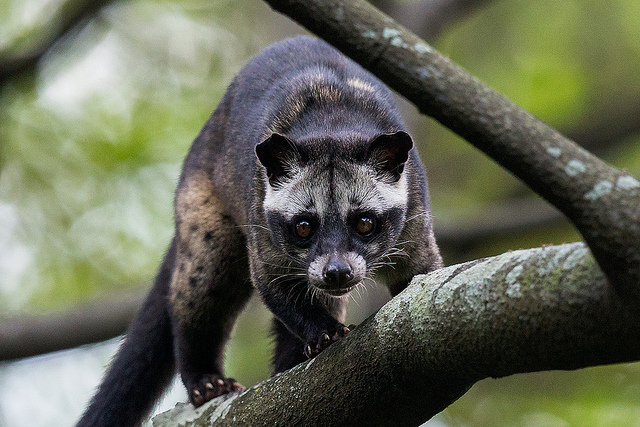Asian Palm Civet Habitat and Behaviours

The Asian Palm civet is widely found in many countries including siberut, Bawean, Kalimantan, Java, Sumatra, Philippeans, China, Vietnam, Cambodia, Laos, Darussalam, Sarawek, Malaysia, Singapore, Thailand, Sri Lanka, Myanmar, Bhutan, Bangladesh, Nepal and India. Even though it is a native in those countries it was yet introduced to other areas like Japan, Sulawesi Maluku and Irian Jaya.
While it always prefer primary forests the dwindling amount of natural forests forced them to lower densities in selectively and secondary logged forests. In later years you will also find civets in suburban gardens and local parks where you get undisturbed vegetation, fig trees and mature fruit trees. Because it has incredibly sharp claws you will find them climbing house gutters and any high trees.
In places like Sri Lanka they are chased or killed as they are regarded as nuisances as they litter in attics and ceilings of households and pests to families. They make noises moving about and often fighting among them too which are disturbing at night.
These civet species are also leading solitary lifestyles and the only time they change pattern is when it is mating season. Sleeping during the day mostly they are active during the night especially very late in the evenings until well after midnight. They will remain active until around 4 in the morning however during bright moonlight evenings their activity dwindles too.
It is interesting to note that there is a big difference between the females and males olfactory and scent marking behaviours.an Asian palm civet easily distinguish familiar and unfamiliar individuals, sex and animal species by the particular odour of their perineal gland secretion.
Olfactory responses to excretions like that of the perineal gland, faeces and urine varies by duration and will also depend on the type of excretion and the species’ sex.

